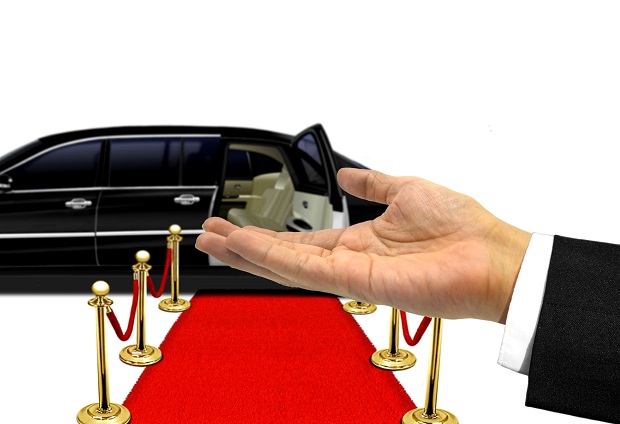Have you ever felt a twinge of worry when planning a trip away from home, wondering who will look after your beloved dog? Are you torn between different boarding facilities, unsure how to choose the best dog kennel? It can be stressful, especially when you want your furry friend to be at ease and safe.
In this post, we’re going to break down everything you need to know about selecting the right dog boarding kennel. We’ll discuss what kennels truly are, how they function, and the factors that separate a decent facility from an excellent one. Plus, we’ll look at specific kennel sizes for small, medium, and large breeds, including the best approach for choosing crate sizes for dogs.
By the end, you’ll be more confident about booking quality accommodation, whether you decide on a home-style kennel, a traditional kennel, RSPCA dog boarding, or even Akuna Kennels in Australia. You’ll also pick up practical tips on making sure your pet is fully prepared to stay away from home. Most importantly, you’ll see why attention to detail in size, staff credentials, and extra services can make all the difference. Let’s dive in.
Understanding Kennels: What Are Kennels and How Do They Work?
Kennels, sometimes called boarding facilities, are areas designed to house dogs when their owners can’t be around. They usually feature indoor sleeping areas and an adjacent outdoor run. Each kennel typically has enough space for a dog to rest, eat, move around, and do their business in a controlled, hygienic environment. For anyone interested in “what are kennels,” think of them as a home-away-from-home for pets who need short-term boarding.
Common Types of Dog Boarding Kennels
Some kennels focus purely on providing basic accommodation, offering a secure sleeping area, scheduled meals, and a yard for exercise. Others seek to be the best dog kennel by including doggy daycare services, social play sessions, and even grooming. Common forms of boarding include large-scale commercial kennels, smaller boutique setups, and RSPCA boarding options. In Australia, RSPCA pet boarding is especially popular for owners who trust the experience and credentials of such well-known providers.
Home-Style Kennels vs. Traditional Kennels
There are two broad types of dog boarding kennels: home-style kennels and traditional ones. Home-style kennels may have fewer boarding spots, aiming to create a more personalised, family-like environment for your dog. Traditional kennels, on the other hand, tend to feature rows of enclosures, each room or pen set up in a uniform manner. Neither approach is universally better. The best choice depends on your dog’s temperament, your budget, and the level of luxury or socialisation you’d like your dog to enjoy while you’re away.
Decoding Kennel Sizes: How Big Should a Kennel Be for a Dog?
If you’ve ever asked yourself, “How big should a kennel be for a dog?” you’re not alone. Many owners worry about space, comfort, and whether their pup will feel restricted. Generally, a kennel needs to be roomy enough for your dog to stand, turn around, and lie down comfortably. But size doesn’t stop there: active dogs might do better with more space to move, while senior or calmer pups might prefer a snug, quiet area.
Doghouse Size and Medium Sized Dog Kennels Explained
When you’re assessing doghouse size, you’ll see categories like small, medium, and large. A medium sized dog kennel often suits breeds like Border Collies, Cocker Spaniels, or Staffies. Medium sized kennels should have extra room if your dog enjoys stretching out. If your dog is on the cusp of two sizes, consider going up a half-size to give them a bit more wiggle room, especially if they spend a lot of time indoors.
German Shepherd Kennel Size: Large-Breed Considerations
For big dogs like German Shepherds, space is critical. A German Shepherd kennel size needs to account for their muscular build, their need to pace around, and their overall weight. Large-breed kennels in a boarding facility often feature reinforced gates and taller walls. This ensures that active big dogs stay securely in place and remain comfortable. Boarding staff might also separate large dogs from smaller breeds for playtime, making sure everyone is safe and relaxed.
What Size Kennel for Dog? Matching Space to Your Pet’s Needs
Asking “What size kennel for dog?” can feel confusing, because dogs vary so much in shape and energy. Clever kennel managers measure a dog’s height at the shoulder and length from nose to tail, ensuring the final enclosure is generously sized. If you’re looking to board an active or anxious breed, ask your chosen facility about extra play areas or one-on-one exercise sessions. That way, even if the kennel is of average dimensions, your pet can still burn off steam daily.
Crate Sizes for Dogs: Dog Crate Measurements and Practical Tips
While kennel sizes in boarding facilities are crucial, crate sizes for dogs also matter greatly. You might need a crate for transporting your pet to and from the kennel, or for occasional home use. Choosing the right dog crate measurements can help keep your pup comfortable, whether you’re travelling or simply offering them a safe nook in your living room.
Understanding Different Crate Styles
Dog crates come in wire, plastic, or even fabric forms. Wire crates are popular for their ventilation and visibility. Plastic crates are enclosed, offering a more cave-like feel that can help anxious dogs feel secure. Fabric crates might suit calmer dogs who won’t chew or scratch. Whichever option you choose, always verify the recommended weight and size limits. If you’re travelling, double-check any airline conditions on crate dimensions to avoid a stressful last-minute scramble.
Finding the Best Dog Kennel for Travel or Home Use
Besides dimensions, consider where and how you plan to use a crate or kennel. A portable crate might be best for those who regularly drive or take quick trips. A larger, sturdier kennel at home might be necessary for bigger breeds like Huskies or German Shepherds. If you’re aiming for convenience, look for collapsible wire crates that fold flat. Minimal space at home? A compact crate with a handle makes moving it around easier. Always test the crate with your dog before a big trip to ensure they feel relaxed within it.
Key Factors to Consider Before You Book
With sizes sorted, there are several other elements to keep in mind before confirming your dog’s boarding arrangement. These revolve around location, level of comfort, staff credentials, and any special services.
Location, Facilities, and Staff Credentials
A kennel’s location can save you travel hassle, especially if your dog dislikes car rides. On top of that, certain amenities might be game changers. Some kennels have shaded outdoor runs or heated indoor sleeping areas. Others run small group playtimes for well-socialised dogs. Check staff credentials carefully and ask if they’re first-aid trained. Most reputable boarding services, including RSPCA boarding, will publicise staff education and experience so you can trust your pet is in good hands.
Accommodation Options at RSPCA Boarding and Similar Providers
When it comes to RSPCA pet boarding, or similar well-regarded services, you’ll typically have a choice between standard and premium accommodation. Standard rooms are fully equipped with the essentials—clean bedding, feeding bowls, and a safe environment. Premium placements may include larger spaces, daily photos of your dog sent to you, or additional interactive play. RSPCA dog boarding also usually prioritises strict vaccination requirements to protect every dog staying there.
Specialised Services: Akuna Pet Resort and Akuna Kennels
In certain parts of Australia, you’ll hear about Akuna Pet Resort or Akuna Kennels. These are known for offering extras like daily walks along scenic trails, hydrotherapy sessions, or group social hours with dogs of a similar size and temperament. If your fur baby needs more than just a kennel, such specialised options might provide peace of mind. Akuna Pet Resorts often cater to owners who want a holiday experience for their dog. Just be sure to confirm availability well ahead of time, especially during peak periods.

Preparing Your Pet for Boarding
Boarding can be a new experience for your dog, so it helps to plan. A little preparation now can save stress and make the entire process smoother.
Assessing Your Dog’s Temperament and Habits
Observe how your dog behaves in group scenarios, such as dog parks or with visitors. If they’re anxious around new dogs, consider a kennel that offers one-on-one play. If they’re friendly by nature, a kennel with regular group social interactions might be ideal. Identify any triggers, like thunder or separation anxiety, and inform kennel staff. That way, they’ll know how to respond if your dog shows signs of stress.
Ensuring Vaccinations and Health Checks
Local boarding regulations require various vaccinations—often including canine distemper, hepatitis, parvovirus, and kennel cough. Always check the kennel’s specific requirements because skipping even one shot can result in being turned away at the door. Additionally, schedule a vet visit to ensure your pup is parasite-free and in robust health before you drop them off. Keep a copy of their medical records handy in case the facility asks for proof of vaccinations.
Visiting Kennels in Person: A Checklist
Even the nicest-looking website can’t guarantee the facility is well-maintained. Visiting in person is essential to get a real feel for the place, the staff, and the animals currently boarding there.
Cleanliness, Safety, and Comfort
On your tour, keep an eye out for clean floors, freshwater bowls, and tidy kennels. A slight doggy odour is normal, but overwhelming smells could suggest poor sanitation. Also, observe if dogs seem calm or stressed. A well-run dog boarding kennel will have staff members interacting with the animals frequently, ensuring mental stimulation and preventing boredom. Check that gates are secure and that there are no obvious hazards like loose wiring or broken fence panels.
Asking the Right Questions on Your Tour
During your visit, ask if the kennel separates dogs by size or temperament. Find out about staff-to-dog ratios—fewer dogs per staff member usually means more individual attention. Ask how meals are handled, whether you can bring your own dog food, and if they cater for any special diets. Inquire about daily schedules too, including walk times, feeding times, and rest periods. The more you know, the more prepared you’ll feel to leave your pup in their care.
Final Thoughts: Making the Right Decision for Your Pet’s Comfort and Safety
Summing up, choosing the right dog boarding kennel is about balancing the practical side—like kennel size and staff qualifications—with your dog’s personality and habits. Whether you decide on a home-style kennel or a bigger setup like RSPCA pet boarding, the goal is that your pup feels safe, stimulated, and in good hands. A diligent approach, from reading facility reviews to checking staff-to-dog ratios, helps narrow down your options.
Think through how your dog thrives: do they crave active play, cosy dens, or plenty of social time with other pups? Pair that knowledge with your own budget, location preferences, and the level of service you’d like. Remember to confirm vaccination requirements and gather any paperwork before finalising you’re booking. Little steps like these create a stable environment for your dog while you’re away.
Ultimately, the right kennel offers you peace of mind. If you haven’t already done so, start your journey by shortlisting kennels, scheduling tours, and asking those all-important questions. Your canine companion deserves a comfortable holiday too. Make sure everything from the kennel’s size to the daily routine lines up with your pet’s needs. Then, you can embark on your trip knowing your furry friend will be well cared for—and eager to welcome your home.
Have you ever felt a twinge of worry when planning a trip away from home, wondering who will look after your beloved dog? Are you torn betw...













.png)





